The Sky-Watcher Star Adventurer 2i is an updated version of the original Star Adventurer tracking mount. It brings the app-based control of the Star Adventurer Mini (SAM) to its slightly larger brother.
Setting Up
The mount has had a cosmetic overhaul, with white paint and green attachments in place of the original black or red. Mechanically however the mount appears unchanged.
Like the original Star Adventurer, it can be set up in two configurations, as shown in the images below, with the camera attached directly with a ball head or with the “fine-tuning mounting assembly”, which effectively turns the 2i into a small equatorial mount, with movement adjusted in right-ascension and declination. Unless you have a collar mount around the lens allowing rotation, the orientation of the camera will be fixed with this approach.
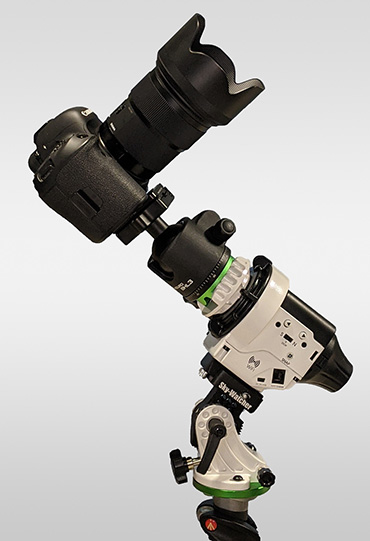
Camera mounted directly with ball head
The polar alignment scope is permanently built into the mount. If using a ball head, you’ll need to align the mount before attaching the camera, likely using the illuminator, which attaches separately. If using the fine-tuning mounting assembly, it is possible to view through the polar scope and adjust the alignment with all the camera weight on the mount, which I recommend. You can modify the lugs on the illuminator to fit it into the green dovetail. The SAM I reviewed earlier actually shipped with a very simple adapter for this purpose.
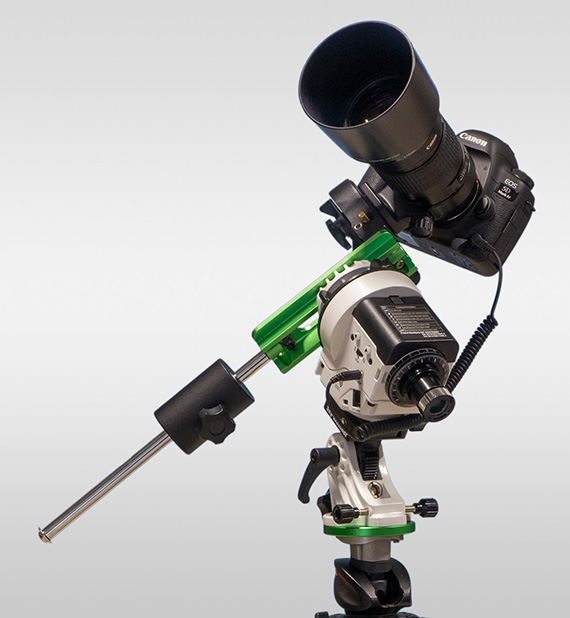
Fine-tuning mounting assembly with counterweight
If I could request one change to the Star Adventurer mounts, it would be to have an effective illuminator built into the core of the mount and which could be dimmed to very low levels. (If more product and equipment designers tried to do astrophotography in the southern hemisphere, this might be less of an issue.) The app-based alignment is easy for northerners with no need for the illuminator if you align during twilight once you can see Polaris.
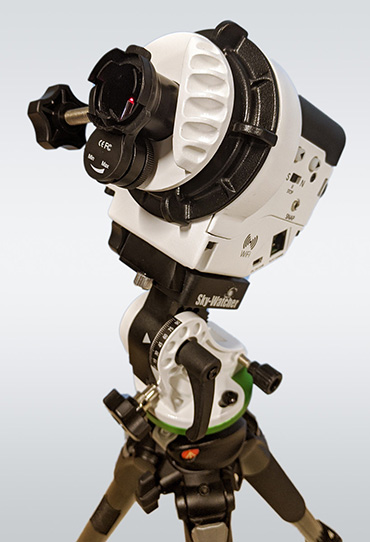
Polar scope illuminator inserted into polar axis
On my first night with this mount, I intentionally misaligned the polar axis and shot images at 400mm focal length. The resulting drift also reveals the periodic error, in this case around 40″ (arc seconds). This may be marginally better than the two previous mounts I’ve tested, but I expect it’s within sample variation. This level of performance is to be expected with any compact mount built around such small gears.

Periodic Error Test @400mm
Star Adventurer Console App
The app to control the Star Adventurer 2i is the same as to control the SAM.
One thing to bear in mind is that you set both the tracking and the exposures in the app and they are linked. Once the time required for your exposure sequence has completed, the mount will also turn tracking off. This can be handy if you want to set exposures running but have the mount stop itself when complete while you’ve gone off to sleep. But if you want to control the camera with your own timer release or internal controls, you need to make sure that the exposure settings will see the mount continue running for that period of time. Whatever settings you last use are also programmed in to the relevant dial on the mount so you can reuse them without needing the app connected.
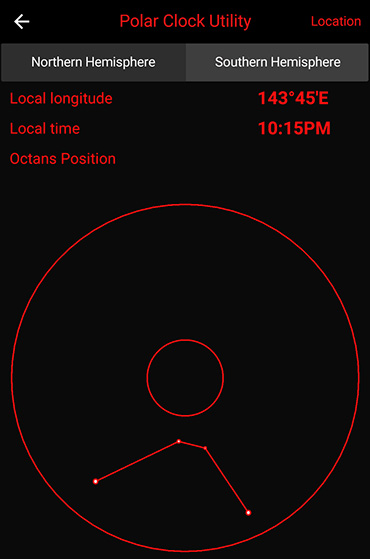
Polar Clock Utility showing orientation of Octans stars
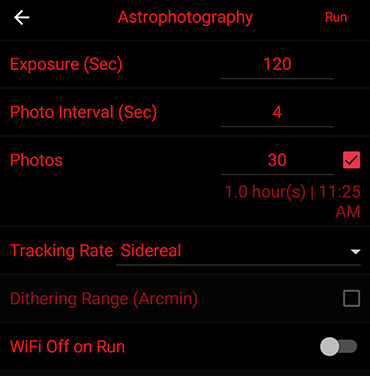
Example Astrophotography settings (30 x 2 min exposures)
Note for Android users: As of March 2021, the console app v1.5.0 available through the Play Store (last updated June 2019) is not compatible with Android 11. Sky-Watcher have released v1.5.5 of their app on their website, but you’ll need to work to install it on your phone. Chrome won’t download it and Gmail won’t send .apk files. I could get it onto my phone using Google Drive, but had to override a security default there which blocked the ability to download of .apk files. Then I had to change the system security settings to allow install of apps from outside the Play Store. Hopefully the new version will be available on the Play Store and I will update this text here when that happens. The iPhone version currently works fine.
Results
The Star Adventurer 2i, and other portable tracking mounts, shine when using wide-angle lenses through to short telephoto focal lengths. Milky Way imaging like this is an easy introduction to astrophotography and rewarding even for seasoned imagers. If your polar alignment is accurate, with short lenses you can easily track single exposures for 10 to 15 minutes.
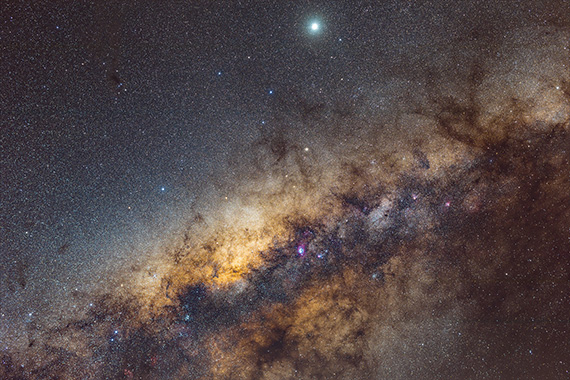
Jupiter and the Milky Way (Canon 5D Mark IV, 50mm Sigma ART lens, single exposure: 10 mins, f2.8, ISO 400)
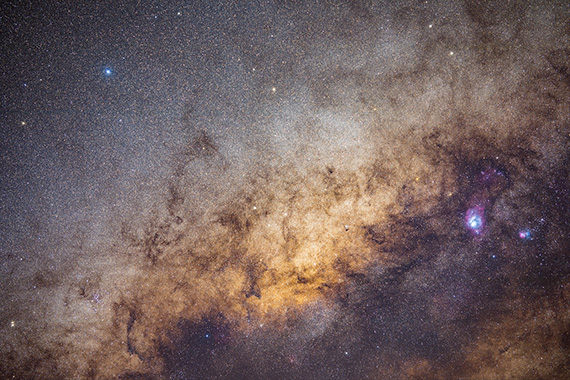
Heart of the Milky Way (135mm, stack of 7 5-min exposures, total 35 mins)
While I recommend sticking to modest focal lengths, there is nothing stopping you from going deep. Below is an image from six hours of exposure on the Corona Australis dust cloud, captured relatively low in the sky with a 200mm lens and standard (not modified) 5D Mark IV DSLR.
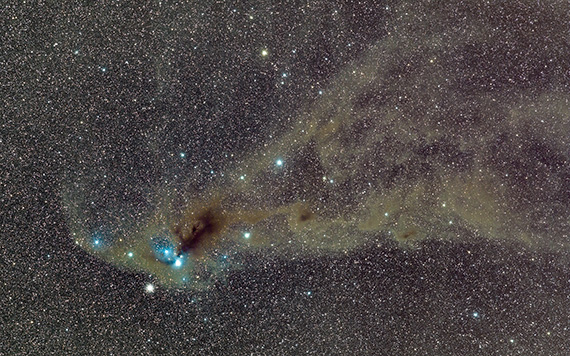
Corona Australis Dust Cloud (200mm, stack of 480 45-second sub-exposures, total 6 hours)
Timelapse
If you want to try long-exposure astrophotography, but timelapse is your primary intended purpose, the Star Adventurer Mini may be a better choice. Because the polar scope is removable, the SAM provides tripod attachment threads on two sides, making it easy to setup for vertical or horizontal panning motion. With the Star Adventurer and its fixed polar scope, you need the latitude base or another ball head or bracket between the tripod and the mount to set it up for horizontal panning.
The video below is a collection of sample footage I’ve captured with the Star Adventurer 2i. Again refer to my previous reviews for other examples of what you can achieve with these mounts.
Around the 50-second mark I include an example of Astro-Timelapse vs Regular Timelapse. In Astro-Timelapse mode, the mount tracks the stars for the short exposure, then resets the mount position back to the same starting point before starting the next exposure. For the Regular Timelapse, the mount is turned off, so there is a higher degree of trailing in each frame. If the exposure times are too long, then the stars may appear to flicker from one position to the next between frames. This effect is similar to having a shutter angle that is too low during daytime photography and so footage may render smoother, albeit with trailed stars, in regular timelapse (non-tracking) mode. However, in this example the Astro-Timelapse mode is quite effective and produces more pleasing footage.
Either of these mounts are effective for timelapse motion control as a complement to tracked long-exposure astrophotography. If daytime timelapse motion control is your only intended function you may find dedicated motion control products cheaper (for single-axis) or offering dual-axis motion or more tailored control systems. The Astro-Timelapse option is an interesting and relatively unique feature that renders footage better than I expected.
The settings to configure the console app for timelapse control could be made more intuitive. There are effectively two independent sets of figures—one to fix number and duration of exposures and the other to configure range and speed of motion. The app allows you to set the intended duration of the video file but this gets quite confusing as you need to set some parameters and then the others are determined based on these. My advice would be to set the exposure time and number of photos and let the app show you what the resulting duration of the video file will be (for a given frame rate). Then choose the amount of motion to apply—less is more in this case. I recommend not much more than seven degrees per hour at night, unless you are shooting very short exposures under moonlight (less than 10 seconds).
Pushing the Limits
If your real interest lies in deep-sky astrophotography and you intend to use long lenses or small telescopes, you need to ask yourself some hard questions about whether a portable tracking mount is right for you. Like most astrophotographers, I’ve have had it drummed into me that you need a solid (heavy) mount for reliable imaging, which will typically allow for autoguiding in both right-ascension and declination axes also. But you are looking at $1,500 minimum, or hunting around on the second-hand market, to take that step.
So for the purposes of this review, I’ve had a go pushing the limits with these smaller mounts. The image below shows my Borg 77EDII eclipse scope (550mm focal length) with a Canon 5D Mark IV on the Star Adventurer 2i mount. On paper, this is well within the 5 kg load limit for the mount (1.8 kg Borg plus 0.9 kg DSLR), but it is a very wobbly beast with all that leverage hanging off such a small mount. Luckily it was a calm night, although not completely still.
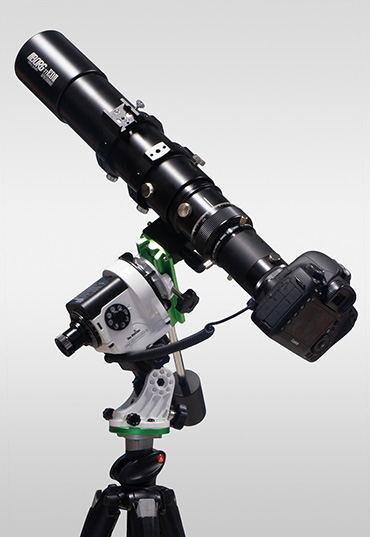
Borg 550mm focal length
By using short 30-second exposures, and allowing software to reject the worst images and align and stack the rest, you can come up with reasonable deep-sky images, at least at web resolutions. Although many of the sub-exposures are noticeably and even heavily trailed, the sum of many of them looks surpisingly OK, even if lacking the sharpness and resolution that the optics are capable of. I wouldn’t recommend this approach to deep-sky astrophotography, but you can have a play. Expect some fiddling around trying to centre your target and get the focus right. While there is an autoguider port available for right-ascension corrections only, the extra weight and complexity of trying to attach a guidescope, guide camera, cables and computer control would seem to defeat the purpose of these mounts.
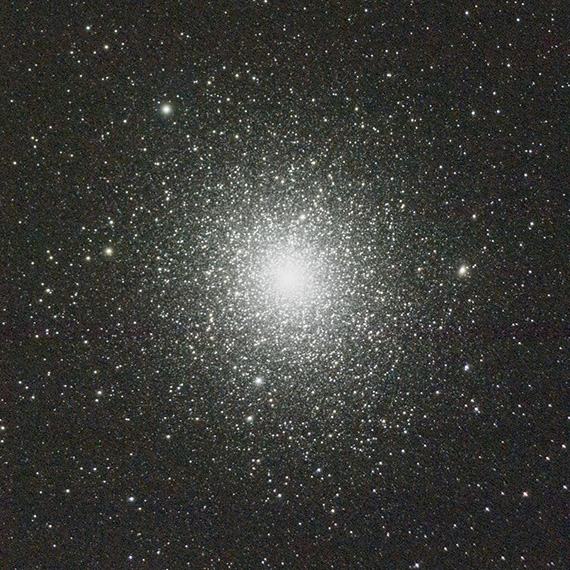
47 Tucanae (550mm stack of 30 for 30 seconds each, 15 minutes total)
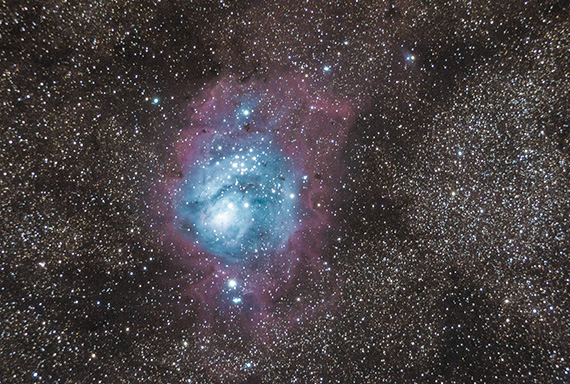
Lagoon Nebula (550mm, stack of 30 x 30 seconds each, 15 minutes total)
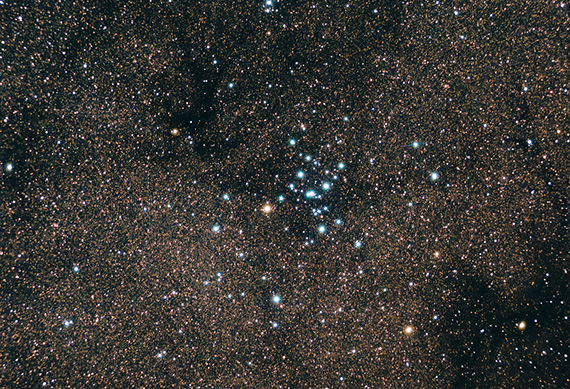
Open Cluster Messier 7 (550mm, stack of 20 x 30 seconds each, 10 minutes total)
Summary
If you already own the original Star Adventurer or the SAM (Mini) version, few would find reason to upgrade to the 2i. But if you’re looking for your first portable tracking mount, with the option for single-axis timelapse motion control, then the 2i remains one of the most affordable options available.
Full Disclosure: Sky-Watcher Australia provided the demo unit in exchange for this extensive (and time-consuming!) review. Your comments or feedback are also appreciated.
For Further Training on Astrophotography:
I have updated my Shooting Stars eBook with 30 pages in a new section called “Tracking the Stars”, showing how to polar align and use the Star Adventurer mounts for astrophotography, and how to calibrate and stack deep-sky images using Photoshop, Deep Sky Stacker and Astro Pixel Processor.
There is currently an exclusive 50% discount for PictureCorrect readers which ends soon. It also carries a 90 day happiness guarantee, if you are not satisfied just let us know and we will give you a full refund so there is no risk in trying it.
Deal found here: Shooting Stars – How to Photograph the Moon & Stars at 50% Off
Go to full article: Sky-Watcher Star Adventurer 2i Tracking Mount Review
What are your thoughts on this article? Join the discussion on Facebook
PictureCorrect subscribers can also learn more today with our #1 bestseller: The Photography Tutorial eBook
The post Sky-Watcher Star Adventurer 2i Tracking Mount Review appeared first on PictureCorrect.
from PictureCorrect https://ift.tt/3xMkzVP
via IFTTT






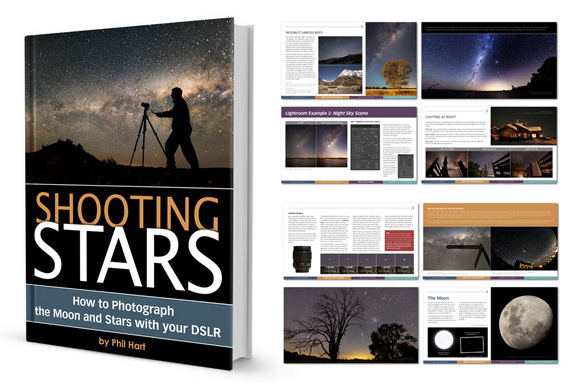
0 kommenttia:
Lähetä kommentti